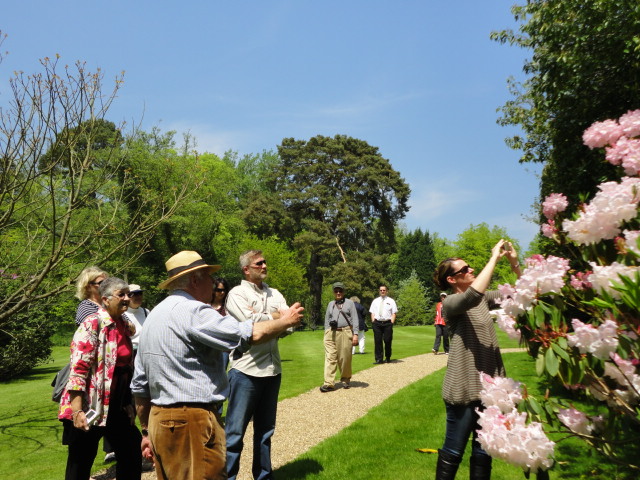Kasteel Warmelo
The house and gardens of Het Warmelo were restored in the 1930s by the Baroness Creutz with the professional help of designer Hugo Poortman, a pupil of Edouard André, who had also worked at Kasteel Twickel and Kasteel Weldam. The garden is an interesting complex of gardens dating from different periods, including an 18th century landscape garden, a French formal garden and a pinetum which dates from the Victorian age.
The signed route leads around the outside of the garden and gradually spirals into the middle. On your right as you enter is the 20th century well garden, with two rills, rhododendrons and azaleas. Yew hedges enclose a garden room designed in 1920 by Baroness F. Creutz, where part of the great fuscia collection – 350 varieties of 3,000 plants – and lantanas are displayed. Then follows a marsh garden from where a lane of birches leads to a woodland glade, with a Davidia involucrate and other exotic trees. The English landscape park follows. Halfway round there is a sudden splendid view of the house across a lake, a canal and a moat. Another detour leads to a small mount, planted with azaleas. Bridges and mossy paths lead to the 19th century pinetum planned by Princess Armgard von Lippe Biesterfeld, who planted exotic pines and other conifers to create a theatrical setting. A lawn with serpentine edges is enclosed by majestic conifers which create a natural nave. Groups of large prostrate junipers make a fine contrast. At the end of the lawn there are azalea borders.
From this Victorian grandeur, there is another sudden change of style as one enters first the French star garden and then the French Rococo garden with a stone bassin accompanied by four symmetrically placed spiral-clipped box trees. This is an exquisite formal garden and forms another of the delightful contrasts which make Warmelo so special. The signed route continues across the lawn in front of the house, between the canal and the moat, to the rose garden where scented roses grow in a symmetrically-planned layout and yews frame a Rococo pool. The visit continues via the menagerie, with exotic birds, and finishes at the forecourt where yew topiary, clipped thujas and box edged parterres in front of the 18th century house are framed by its mulberry-clad walls.

 Passionate about beautiful gardens? Experience the finest gardens on one of our small and friendly group tours.
Passionate about beautiful gardens? Experience the finest gardens on one of our small and friendly group tours.
 Ready to book?
Ready to book? 
